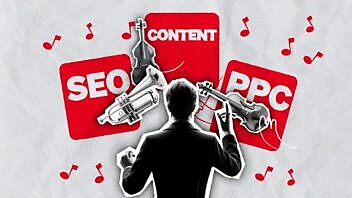Tech marketing can move very, very fast. Here are our own experiences from a fast-moving project.
There’s no chapter in the marketing handbook about how to go fast. Speed’s not generally considered a strategic asset.
Yet, in the biorhythms of business, sometimes fast is the only speed, if it’s going to get done at all.
And, sometimes, sometimes, that speed actually does become an asset:
- Leaders demand and get all the input they need to make good decisions, quickly.
- Creatives don’t get distracted by other clients and projects.
- Committees are given a mandate to advise, not meddle or direct.
- Managers never lose sight of the project’s goals, or its progress towards them.
Such was the case on a recent Velocity project for Citrix.
In five weeks we interviewed the leadership team of Citrix Services, recommended positioning and messages to go with it, contributed to a complex leadflow, developed a visual identity, designed, copywrote and coded an HTML5 microsite and completed a half-dozen projects around it (from escalator artwork to Marketo-templated landing pages).
It’s not the kind of timing we usually recommend, but they were determined to squeeze the work in before a major event (more on that later) and we were emboldened by the brains and talent of the client and thereof the challenge.
You can see the project in all its gory, but appropriately swift, detail in a Prezi we made to illustrate it. Here I aim only to share some observations on the ways we were able to work quickly, and well, and well quickly.
- Identifying a high-speed opportunity: Some projects benefit from speed. Others don’t. In this case, the client recognized that a long-standing challenge facing the Citrix Services organization could be well pushed-through if there was some velocity behind it (no pun intended). Concentrating minds would be the only way to get this thing done.
- Compressing the input phase: We in Velocity start most projects in what we call sponge mode. If we can spend eight hours straight absorbing, that’s a great start. Citrix Services lined up one executive interview after another for a total of six in about two days.
- Keeping the problem front and centre: From the moment we got those briefings until the moment we returned with recommendations, we had zero interruption. And the executives who we presented back to only five days later remembered perfectly well our initial discussions.
- Product iteration from the word “go!”: The creative team started to bounce execution ideas for the event from the very start. Throughout the planning phases, this brainstorming iterated, progressed, grew refined, iterated again and progressed further. By the time we shared campaign concepts, the ideas were as refined as jet fuel.
- Cloud tools: The project teams on both agency and client side were committed to working with open collaboration tools throughout. This meant Basecamp for project management, Google Docs for planning and GoToMeeting for conference calls.
- Centralized design: Our head designer Jim Harrison took personal responsibility for everything to do with design, then delegated work to the broader design and coding team. He kept the identity tight and clear, making every execution quicker.
- Identifying and clearing away speed bumps: On Citrix Services’ side, the marketing managers were very quick to detect where and when a potential conflict of interest could slow us down, flag it and align everyone so that it could be resolved quickly.
- An immovable object: All of the work needed to be done by Citrix Synergy, their key event. Needed to be done, as in “if it’s not done by then, you might as well not have done it.” Every discussion in Velocity and with the client began and ended with a review of time plans.
- Sketches, sketches, sketches: Throughout the project, creative ideas and processes were drawn and redrawn and shared, and then drawn again. Even the project administration was highly visual. This created more clarity and faster decisions throughout.
- Solving problems immediately: Many projects have unresolved issues that fester, or that get pushed off. On this project, any roadblock (and there were a few) got immediate attention until it was resolved.
- Share early, with provisos: We shared creative work as early as possible, but led with warnings (this is not final; this bit here is unfinished; this is a suggestion), to get quick validation on creative direction. Then leapt ahead.
- Polish when finished: Many deliverables were not fully “polished” (fixing the things only a designer or copywriter actually sees) until they were fully signed-off. That way we didn’t spend polishing work that would undergo major changes.
Any agency needs to be humble when a project goes quickly, relatively smoothly and successfully. If anything, more credit goes to the client and their team. The commitment, tact and intelligence of the duo from Citrix (Bryon Thomas and Sara Queen) cannot be overemphasized.
For other fast-moving marketers or agency types, what are your project velocity hacks? How do you get stuff done well and quickly?
Enjoyed this article?
Take part in the discussion









Comments
There are no comments yet for this post. Why not be the first?